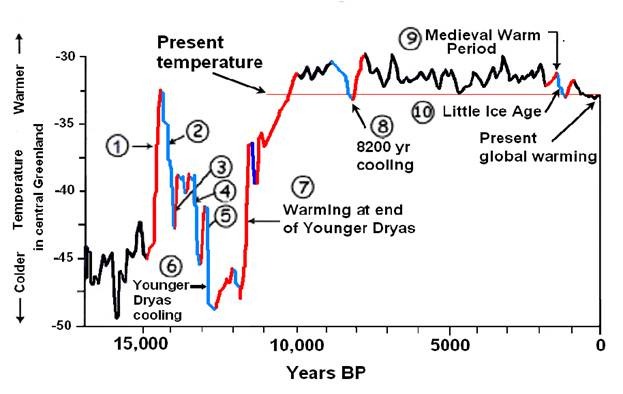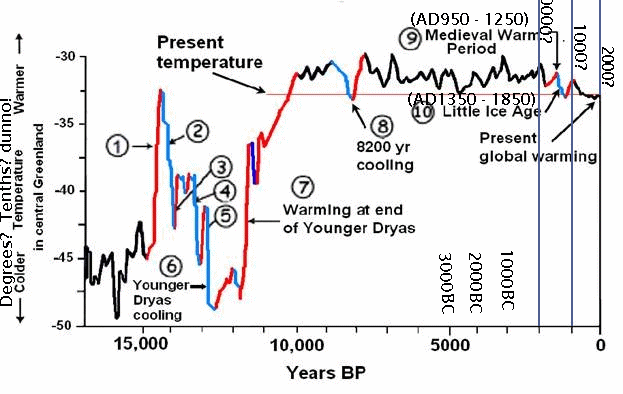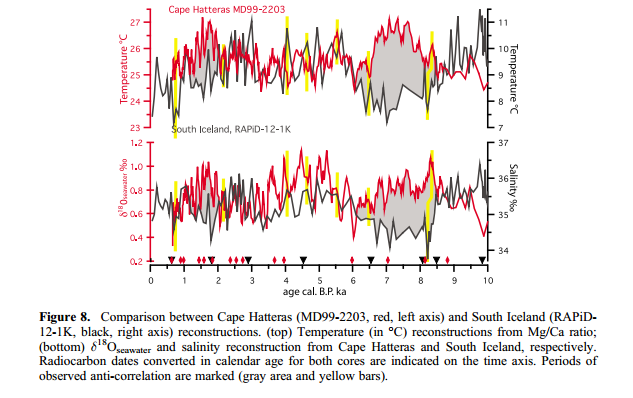It looks like you're using an Ad Blocker.
Please white-list or disable AboveTopSecret.com in your ad-blocking tool.
Thank you.
Some features of ATS will be disabled while you continue to use an ad-blocker.
2
share:
This is my first one, let's see how it goes.
_____________________________________________________
Merchants of doubt is the title of a book written by Naomi Oreskes and co-author Erik Conway, that tells the story of how distinct groups of scientists have abandoned the scientific principle to push their own political and ideological agendas.
“A well-documented, pulls-no-punches account of how science works and how political motives can hijack the process by which scientific information is disseminated to the public.”
www.merchantsofdoubt.org...
Naomi Oreskes is a Professor of the History of Science and Affiliated Professor of Earth and Planetary Sciences. She recently arrived at Harvard after spending 15 years as Professor of History and Science Studies at the University of California, San Diego, and Adjunct Professor of Geosciences at the Scripps Institution of Oceanography. Professor Oreskes’s research focuses on the earth and environmental sciences, with a particular interest in understanding scientific consensus and dissent.
www.fas.harvard.edu...
Her work over the last decade was primarily focused on public perception of climate science, and especially on the apparent disconnect between the state of scientific knowledge about climate change among experts and the response of modern society.
In a TED talk she gave last May, Naomi Oreskes makes her case why scientists ought to be trusted and why they deserve that trust.
www.ted.com
A relatively short segment of her talk relates to climate change directly. The chart shown below is presented as evidence that the increase in surface temperatures over past 50 years was primarily caused by man-made greenhouse gases.

Naomi Oreskes was also the co-author of a peer-reviewed paper published this year, which compares model outputs to real world observations. The authors acknowledge the obvious mismatch between model simulations and observed temperature change over the last 15+ years. They argue, however, that direct comparisons are not appropriate to test for the credibility of climate models.
But the point here is simply to show that Naomi Oreskes must be fully aware that peer-reviewed research exists that seriously questions the models' ability to simulate the observed climate system.
www.nature.com...(paywalled)
Hans von Storch is one of the scientists referenced in the study, he explains his take on the discrepancy between models and data in an interview with "Der Spiegel".
www.academia.edu...
Our trust in science is ultimately an expression of confidence in the credibility of individual scientists and their commitment to the truth.
If a scientist misses the opportunity to present a truthful summary of the current state of knowledge, he can no longer claim to be a credible source of information.
_____________________________________________________
Merchants of doubt is the title of a book written by Naomi Oreskes and co-author Erik Conway, that tells the story of how distinct groups of scientists have abandoned the scientific principle to push their own political and ideological agendas.
“A well-documented, pulls-no-punches account of how science works and how political motives can hijack the process by which scientific information is disseminated to the public.”
www.merchantsofdoubt.org...
Naomi Oreskes is a Professor of the History of Science and Affiliated Professor of Earth and Planetary Sciences. She recently arrived at Harvard after spending 15 years as Professor of History and Science Studies at the University of California, San Diego, and Adjunct Professor of Geosciences at the Scripps Institution of Oceanography. Professor Oreskes’s research focuses on the earth and environmental sciences, with a particular interest in understanding scientific consensus and dissent.
www.fas.harvard.edu...
Her work over the last decade was primarily focused on public perception of climate science, and especially on the apparent disconnect between the state of scientific knowledge about climate change among experts and the response of modern society.
In a TED talk she gave last May, Naomi Oreskes makes her case why scientists ought to be trusted and why they deserve that trust.
But it shouldn't be blind trust any more than we would have blind trust in anything. Our trust in science, like science itself, should be based on evidence, and that means that scientists have to become better communicators. They have to explain to us not just what they know but how they know it, and it means that we have to become better listeners.
www.ted.com
A relatively short segment of her talk relates to climate change directly. The chart shown below is presented as evidence that the increase in surface temperatures over past 50 years was primarily caused by man-made greenhouse gases.

This slide here, the black line shows the measurements that scientists have taken for the last 150 years showing that the Earth's temperature has steadily increased, and you can see in particular that in the last 50 years there's been this dramatic increase of nearly one degree centigrade, or almost two degrees Fahrenheit.
So what, though, is driving that change? How can we know what's causing the observed warming? Well, scientists can model it using a computer simulation. So this diagram illustrates a computer simulation that has looked at all the different factors that we know can influence the Earth's climate, so sulfate particles from air pollution, volcanic dust from volcanic eruptions, changes in solar radiation, and, of course, greenhouse gases.
And they asked the question, what set of variables put into a model will reproduce what we actually see in real life? So here is the real life in black. Here's the model in this light gray, and the answer is a model that includes, it's the answer E on that SAT, all of the above.
The only way you can reproduce the observed temperature measurements is with all of these things put together, including greenhouse gases, and in particular you can see that the increase in greenhouse gases tracks this very dramatic increase in temperature over the last 50 years. And so this is why climate scientists say it's not just that we know that climate change is happening, we know that greenhouse gases are a major part of the reason why.
www.ted.com...
Naomi Oreskes was also the co-author of a peer-reviewed paper published this year, which compares model outputs to real world observations. The authors acknowledge the obvious mismatch between model simulations and observed temperature change over the last 15+ years. They argue, however, that direct comparisons are not appropriate to test for the credibility of climate models.
But the point here is simply to show that Naomi Oreskes must be fully aware that peer-reviewed research exists that seriously questions the models' ability to simulate the observed climate system.
www.nature.com...(paywalled)
Hans von Storch is one of the scientists referenced in the study, he explains his take on the discrepancy between models and data in an interview with "Der Spiegel".
SPIEGEL: Just since the turn of the millennium, humanity has emitted another 400 billion metric tons of CO2 into the atmosphere, yet temperatures haven't risen in nearly 15 years. What can explain this?
Storch: So far, no one has been able to provide a compelling answer to why climate change seems to be taking a break. We're facing a puzzle. Recent CO2 emissions have actually risen even more steeply than we feared. As a result, according to most climate models, we should have seen temperatures rise by around 0.25 degrees Celsius (0.45 degrees Fahrenheit) over the past 10 years. That hasn't happened. In fact, the increase over the last 15 years was just 0.06 degrees Celsius (0.11 degrees Fahrenheit) -- a value very close to zero. This is a serious scientific problem that the Intergovernmental Panel on Climate Change (IPCC) will have to confront when it presents its next Assessment Report late next year.
SPIEGEL: Do the computer models with which physicists simulate the future climate ever show the sort of long standstill in temperature change that we're observing right now?
Storch: Yes, but only extremely rarely. At my institute, we analyzed how often such a 15-year stagnation in global warming occurred in the simulations. The answer was: in under 2 percent of all the times we ran the simulation. In other words, over 98 percent of forecasts show CO2 emissions as high as we have had in recent years leading to more of a temperature increase.
SPIEGEL: How long will it still be possible to reconcile such a pause in global warming with established climate forecasts?
Storch: If things continue as they have been, in five years, at the latest, we will need to acknowledge that something is fundamentally wrong with our climate models. A 20-year pause in global warming does not occur in a single modeled scenario. But even today, we are finding it very difficult to reconcile actual temperature trends with our expectations.
www.spiegel.de...
www.academia.edu...
Our trust in science is ultimately an expression of confidence in the credibility of individual scientists and their commitment to the truth.
If a scientist misses the opportunity to present a truthful summary of the current state of knowledge, he can no longer claim to be a credible source of information.
a reply to: Millers
Merchants of doubt? Sounds like the status quo defense to me.
Trust scientists? Rubbish.
Understand logic? yes.
Suspend judgement indefinitely? yes.
Seek new knowledge? yes.
Trust is for romance, not science.
Bonus question: Can you spot the point when AGW kicked in?

Merchants of doubt? Sounds like the status quo defense to me.
Trust scientists? Rubbish.
Understand logic? yes.
Suspend judgement indefinitely? yes.
Seek new knowledge? yes.
Trust is for romance, not science.
Bonus question: Can you spot the point when AGW kicked in?

edit on 12-8-2014 by InverseLookingGlass because: added chart
originally posted by: InverseLookingGlass
Bonus question: Can you spot the point when AGW kicked in?
Are you ever going to respond to this:

You have yet to in multiple other threads now.
edit on 13Tue, 12 Aug 2014 13:55:34
-0500America/ChicagovAmerica/Chicago8 by Greven because: (no reason given)
a reply to: InverseLookingGlass
Hi InverseLookingGlass,
Thanks for your reply, but you shouldn't have added the chart. The irony here is that you did exactly what Naomi Oreskes was doing. Both charts aren't based on actual data, they do not represent any scientific fact.
The only difference is that she should know better.
Hi InverseLookingGlass,
Thanks for your reply, but you shouldn't have added the chart. The irony here is that you did exactly what Naomi Oreskes was doing. Both charts aren't based on actual data, they do not represent any scientific fact.
The only difference is that she should know better.
originally posted by: InverseLookingGlass
Merchants of doubt? Sounds like the status quo defense to me. Trust scientists? Rubbish.
Very true.
'Merchants of Smear' would be a bit more accurate...
"...the 2004 Oreskes study — which was the original source for the 97 percent claim — was exposed for the same methodological flaws. Dr. Benny Peiser, a social science professor at John Moores University and visiting fellow at the University of Buckingham, eviscerated the Oreskes study, pointing out that Oreskes had falsified the so-called consensus by her faulty selection criteria in choosing papers to include in her survey. (See hereand here.)"
Cooking Climate Consensus Data: “97% of Scientists Affirm AGW" Debunked
This woman was found to have lied, falsified research, improperly used students to do work when set a dozen of her students to work analyzing. Her work published in the journal SCIENCE. Two Canadian science-trained statisticians were dubious and they repeated the work first finding that over 12,000 articles had been published and not the 978 Naomi claimed had been published. They reported this to SCIENCE who investigated to find Naomi had lied also broken the rule of not using undergrad students for such work. For the first time in their 100 year history SCIENCE published an “Errata” calling Naomi's piece "flawed" and "invalid." Yet this woman has continued to be in high academic positions in colleges and continues to regurgitate these lies.
Merchants of Doubt - Amazon
a reply to: Murgatroid
Hi Murgatroid,
There are many good arguments why a consensus, as claimed by Oreskes and co., cannot exist in climate science.
You say Merchants of Smear is more accurate and perhaps you got a point somewhere. But then you post a comment that's mostly smearing her on based erroneous claims. SCIENCE has published many Errata in the last 100 years and they've never published one calling her piece "flawed and invalid".
The only Erratum to the essay refers to a missing word.
www.sciencemag.org...
Truth is not always a pleasant thing, but it's even more unpleasant without it.
Hi Murgatroid,
There are many good arguments why a consensus, as claimed by Oreskes and co., cannot exist in climate science.
You say Merchants of Smear is more accurate and perhaps you got a point somewhere. But then you post a comment that's mostly smearing her on based erroneous claims. SCIENCE has published many Errata in the last 100 years and they've never published one calling her piece "flawed and invalid".
The only Erratum to the essay refers to a missing word.
www.sciencemag.org...
Truth is not always a pleasant thing, but it's even more unpleasant without it.
Bit of a problem using that chart.
The horizontal scale represents a period of 15 000 years, with each mark on the scale representing a period of 1 000 years.
Medieval warm period and Little Ice Age as indicated on chart happened approx. 1500 years ago.
Do you have an accurate chart to support your argument?
From a source we can confirm?
Thanks
a reply to: InverseLookingGlass
The horizontal scale represents a period of 15 000 years, with each mark on the scale representing a period of 1 000 years.
Medieval warm period and Little Ice Age as indicated on chart happened approx. 1500 years ago.
Do you have an accurate chart to support your argument?
From a source we can confirm?
Thanks
a reply to: InverseLookingGlass
a reply to: Colbomoose
Hi Colbomoose,
I don't think you will get a reply. The chart is junk, just like the one in the OP.
Holocene reconstructions from one location generally don't represent climate changes for the rest of the world. The same is true in reverse, hemispheric or global reconstructions cannot capture the full range of change for the studied parameters.
The chart below is just a random example of two holocene proxies from two different location.

onlinelibrary.wiley.com...
Hi Colbomoose,
I don't think you will get a reply. The chart is junk, just like the one in the OP.
Holocene reconstructions from one location generally don't represent climate changes for the rest of the world. The same is true in reverse, hemispheric or global reconstructions cannot capture the full range of change for the studied parameters.
The chart below is just a random example of two holocene proxies from two different location.

onlinelibrary.wiley.com...
new topics
-
New York Governor signs Climate Law that Fines Fossil Fuel Companies
US Political Madness: 5 minutes ago -
Meta Llama local AI system is scary good
Science & Technology: 5 hours ago -
This is why ALL illegals who live in the US must go
Social Issues and Civil Unrest: 7 hours ago -
UK Borders are NOT Secure!
Social Issues and Civil Unrest: 8 hours ago -
Former ‘GMA Producer’ Sues NPR-Legacy Media Exposed
Propaganda Mill: 10 hours ago -
New Footage - Randy Rhoads 1979 LIVE Guitar Solo Footage at the Whisky - Pro Shot
Music: 11 hours ago -
Happy Hanukkah…
General Chit Chat: 11 hours ago
top topics
-
This is why ALL illegals who live in the US must go
Social Issues and Civil Unrest: 7 hours ago, 16 flags -
Former ‘GMA Producer’ Sues NPR-Legacy Media Exposed
Propaganda Mill: 10 hours ago, 9 flags -
Happy Hanukkah…
General Chit Chat: 11 hours ago, 7 flags -
UK Borders are NOT Secure!
Social Issues and Civil Unrest: 8 hours ago, 6 flags -
New Footage - Randy Rhoads 1979 LIVE Guitar Solo Footage at the Whisky - Pro Shot
Music: 11 hours ago, 5 flags -
Meta Llama local AI system is scary good
Science & Technology: 5 hours ago, 5 flags -
New York Governor signs Climate Law that Fines Fossil Fuel Companies
US Political Madness: 5 minutes ago, 2 flags
active topics
-
New York Governor signs Climate Law that Fines Fossil Fuel Companies
US Political Madness • 1 • : nugget1 -
This is why ALL illegals who live in the US must go
Social Issues and Civil Unrest • 20 • : Astrocometus -
DefCon Teetering on Escalation
World War Three • 53 • : annonentity -
Putin Compares Himself to Jesus Promoting Traditional Values Against the Satanic West
Mainstream News • 76 • : WeMustCare -
Trump says ownership of Greenland 'is an absolute necessity'
Other Current Events • 52 • : cherokeetroy -
Meta Llama local AI system is scary good
Science & Technology • 15 • : LogicalGraphitti -
Happy Hanukkah…
General Chit Chat • 21 • : JJproductions -
RFK JR endorses Trump
2024 Elections • 46 • : WeMustCare -
Mood Music Part VI
Music • 3766 • : Skinnerbot -
London Christmas Market BANS Word ‘Christmas’
Social Issues and Civil Unrest • 55 • : DontTreadOnMe
2
